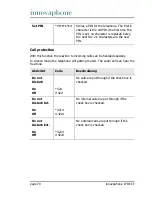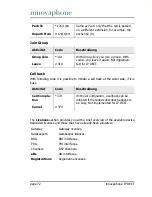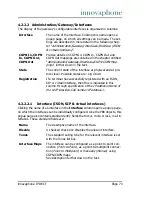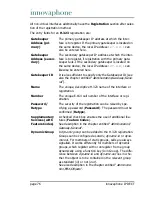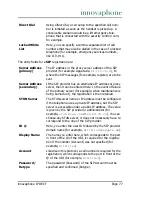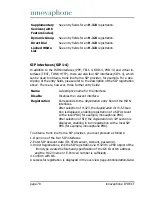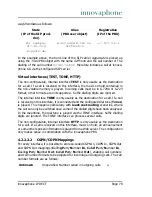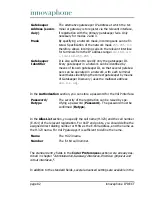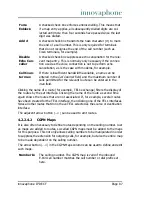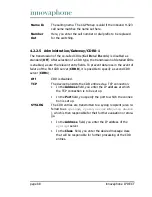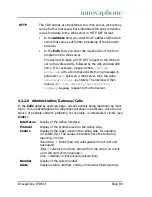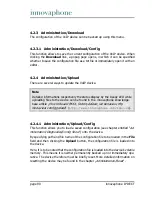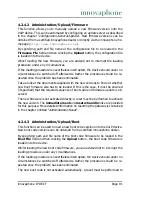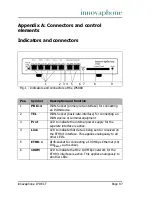
page 84
innovaphone IP DECT
(for voice). For each call direction, a route must be defined. If a call passes se-
veral gateways, a relevant route must be defined in each one. A route defines a
permitted path for a call, from the interface where the call arrives, to the inter-
face from which the call departs. Calls from different interfaces are often handled
in the same way. Therefore, calls from several ISDN interfaces (for example,
TEL1 and TEL2) or from several VoIP interfaces (GW1-12), for example, can be
permitted.
Call switching also often depends on the call number dialled. For this, the validity
of routes for calls with particular destination numbers must be defined by means
of a map entry. Each map entry defines that calls from the source interfaces spe-
cified in the route beginning with the combination of digits specified in the map
entry can be connected to the destination interface defined in the route.
All defined routes are displayed row by row in the routing table. For each indivi-
dual call, the routing table is searched from top to bottom for a suitable map ent-
ry. If it is not possible to switch the call to the identified interface, then the
routing table is searched for the next map entry that meets the specified condi-
tions. If a map entry was found, the current call is switched to the destination
interface of the map entry defined. If no suitable map entry was found, the call
is invalid and is not put through.
4.2.2.4.1
From - To
The routing table is structured as follows:
To create a new routing entry, you must click the
Insert Route below
but-
ton.
A popup page opens, on which the route setting can be made.
This popup page also contains the specification of the map entries.
Clicking the
Add Map above/below
buttons opens the same popup page
and adds a map entry at the relevant place. This popup page is structured
From
The source interface from which a call is to be accepted. It
may be an ISDN interface (TEL, BRI, PRI, etc.) or a VoIP inter-
face (GW1-12).
To
The destination interface to which a call is to be switched. It
may be an ISDN interface (TEL, BRI, PRI, etc.) or a VoIP inter-
face (GW1-12).
CGPN Maps
The CGPN (
C
allin
g P
arty
N
umber) map is used for modifying
the calling number. It allows the extension to be suppressed
for outgoing calls, for example, but also the entire map entry
can be made dependent on the calling number.

